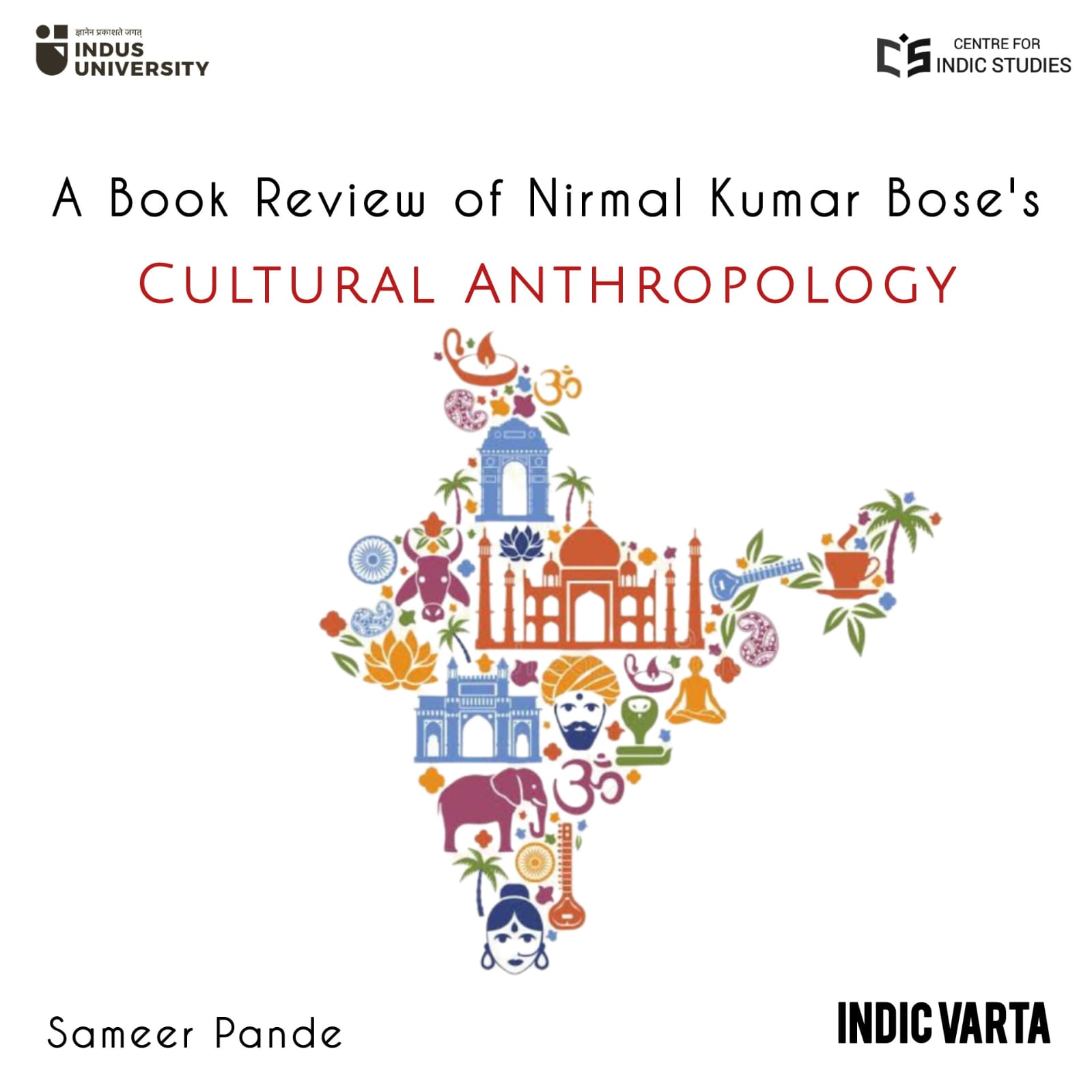- Visitor:81
- Published on:
The wonder of Abhinav Gupta (Part 2)
If Bhartṛhari gives a cognitive science of language, Utpaladeva and Abhinavagupta give a recognitive science. What we need is a recognitive science which is not yet there. In the west, there is cognitive science but there is no recognitive science… And it took thousand years after Abhinavgupta for contemporary Particle Physics to figure out that if these two questions are answered together, the product of their error will be constant. And, that principle is popularly called the Uncertainty Principle.
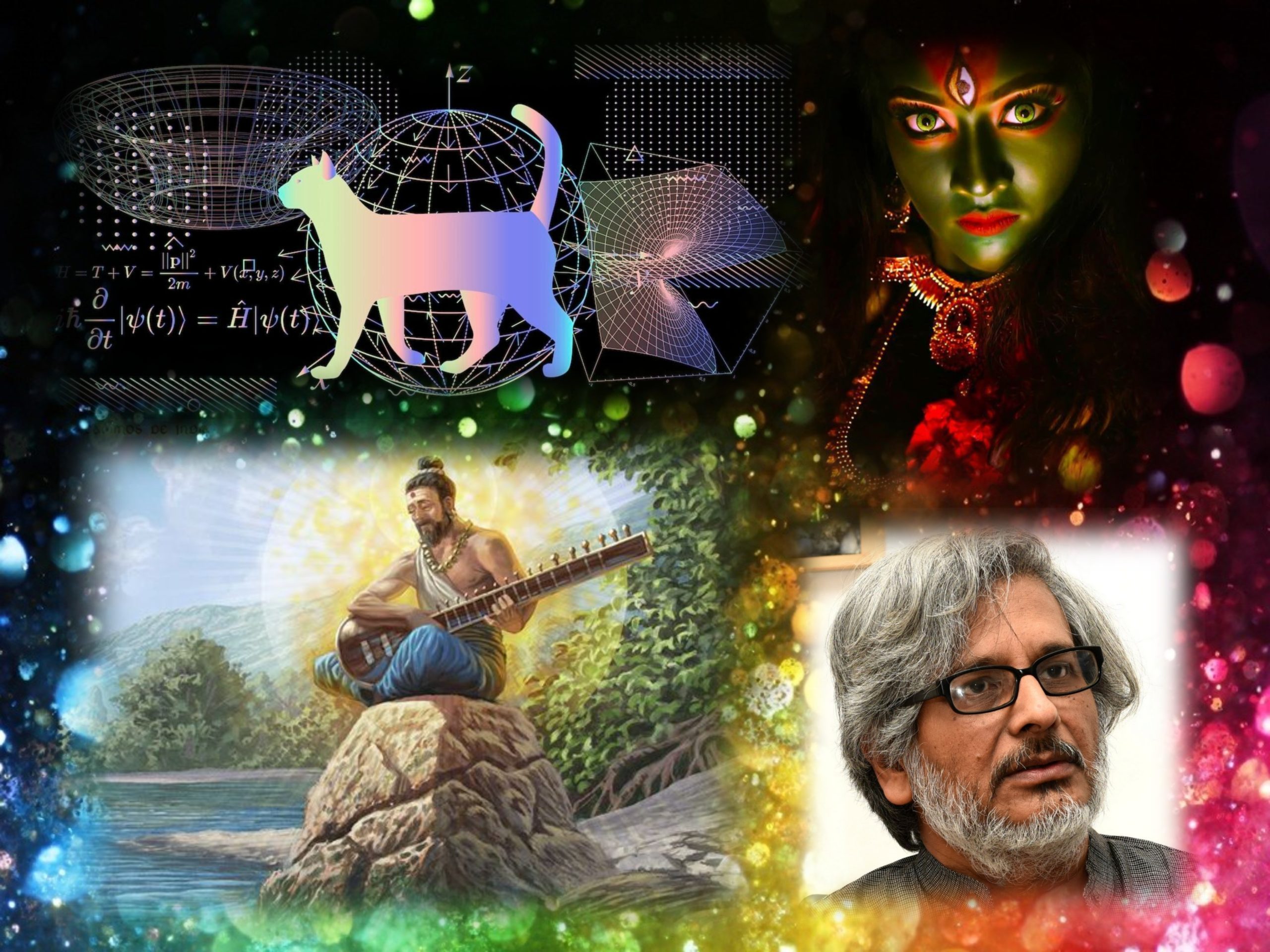
The following content is edited by Rajabhishek Dey (Centre for Indic Studies) from an online talk by Sri Arindam Chakrabarti. The original speech is reshaped in this article format with an intention to spread his voice more for our readers. The discussion is taken from the first online Kashmir Festival organized by Global Kashmiri Pandit diaspora in association with IAmBuddha.
…continued from the last part.
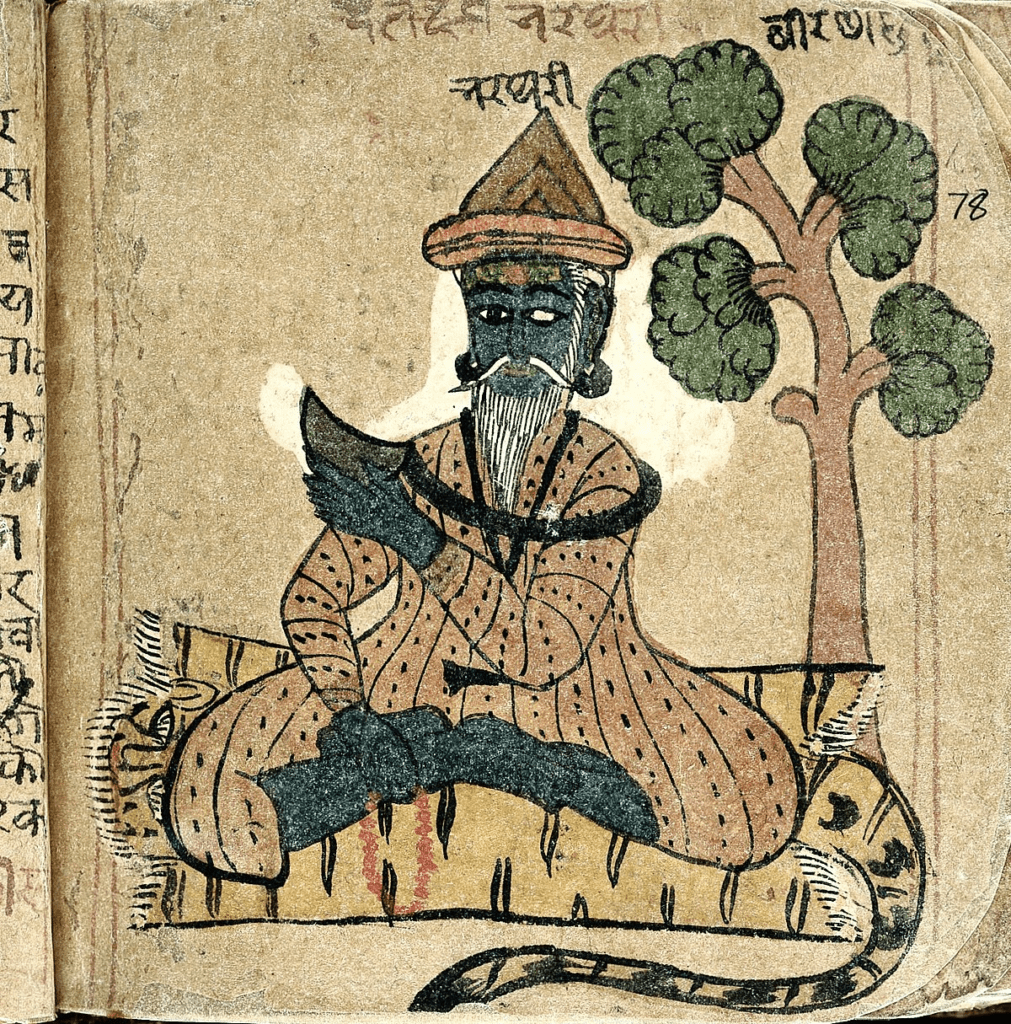
The idea of the vimarsha and paramarsha comes from Bhartṛhari. He gives an argument in Vākyapadīya Volume 1, verse 124. He says, “If awareness loses its language like eternal character, all cognition even our perception (I may be silent, I may not know the name of the color of the object I am holding, I don’t know that it is a cup), the moment I look at it there, the language (shabda) is coming”. So, unless this linguistic character were there, even awareness would not be able to illuminate.
Now move on to premise 2.

What makes an inert mirror? When a mirror reflects, it will never tell you the name of the object. Eventually, searching for a name to remember is a characteristic of human consciousness. So Bhartṛhari, therefore, says that there is linguistic structure implicit in all human cognition. So he in modern terms gives what can be called a “cognitive science of language”.

Now coming to next, what is the difference between Utpaladeva and Abhinavagupta? The latter one almost echoes Bhartṛhari when he says, “Illumination without articulation is neither possible nor intelligible”. But there is a difference and that difference brings us to the heart of the meaning of vimarsha.

If Bhartṛhari gives a cognitive science of language, Utpaladeva and Abhinavagupta give a recognitive science. What we need is a recognitive science which is not yet there. In the west, there is cognitive science but there is no recognitive science.

Now you can understand why I translated vimarsha as “think again, think twice”. There is an emphasised difference between Bhartṛhari and Abhinava. Bhartṛhari uses the concept of the following argument to deduce the linguistic nature. Every objective awareness has intentional content. It is about “something”. Intentional content can come only through articulating the structure and recognition function of the vimarsha.

Wherever there was articulation, distinction and this theory of exclusion after Bhartṛhari (It was elaborated by the great Buddhist teachers to whom Abhinavagupta is very indebted), it was called the theory of apoha or exclusion. How? I cannot begin to recognize the cup unless there are so many things on the table. I will remember the cup as a cup, not only with the help of the word “cup”, but also by thinking of it as not a book, not a hand, not a table, not a man and not a screen of a laptop and not any of these. This is called exclusion. There is a very deep psychology of this exclusion function. But none of this exclusion is possible without the “vimarsha”. Therefore, wherever there is consciousness there is vimarsha. Although Utpaladeva and Abhinavagupta echo this argument. Nonetheless, they make a big change.

They want to show that apart from the proto-linguistic, potentially linguistic, generative character of experience and consciousness, there is something else that printed words, typed words or even audible words do not have… which a mirror that reflects perfectly does not have. Moreover, a sheet of ice in the middle of the high sun which reflects the clear sky (Abhinava’s own comparison and analogy) does not still have that. What is that? It is an inner feel of what it is like to be conscious. This feeling only comes with life or Jeevan/prana. The mirror or the crystal however transparent… however reflectively faithful or absolutely, correctly, vividly reflects but it still is dead. It is inert.

A mirror and crystal reflect other objects but consciousness has to be distinguished from some object. This is because what makes an inert mirror insentient and samvit or consciousness alive and self-aware are the absence and presence of the capacity to select where to attempt.
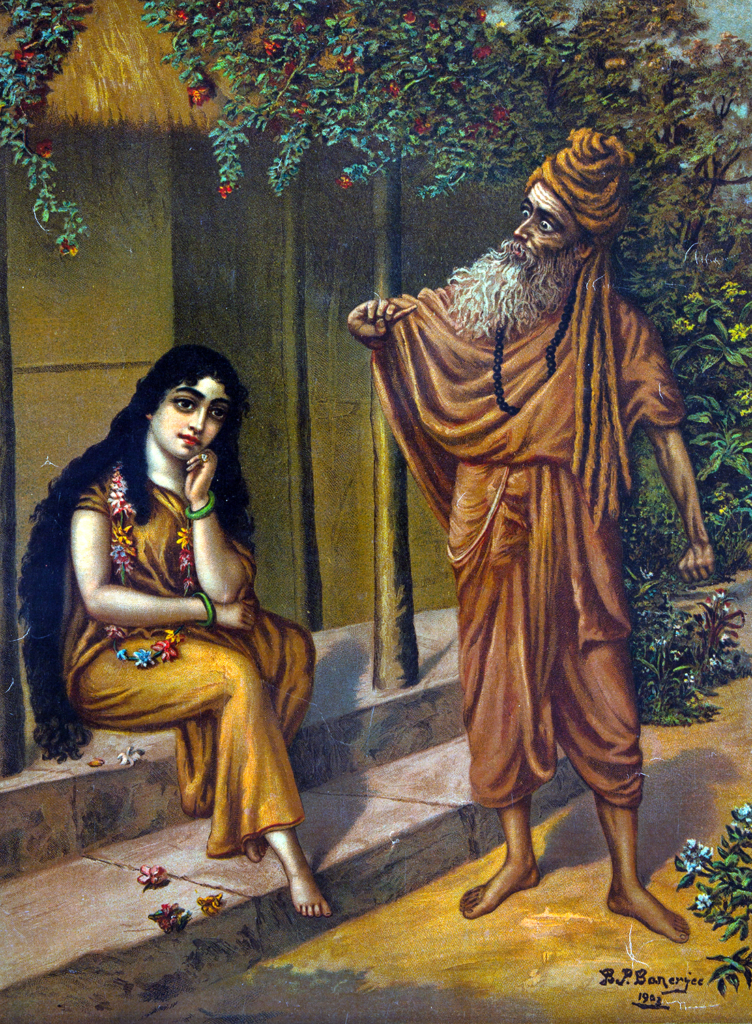
In front of the mirror whatever you bring, it reflects. Nevertheless, in front of consciousness, you can bring a big huge black bear or an angry irate Durvasa. However, consciousness will not notice it. This is because it chooses to attend in memory of the beloved Dushyanta. And that’s why Shakuntala got cursed. Because right in front of her there was Durvasa and her eyes were open. But she did not see him. Consciousness does this because she chose to ignore him. So this free capacity is vimarsha.
Now it becomes different. Bhartrhari’s conceptual linguistic articulation distinguishing power is there. But on top of that, there is something else in vimarsha. This is not only just looping back and thinking twice but thinking twice in two ways. Think of it graphically!
Even Bhartrhari knew that consciousness becomes Prakash/light of consciousness. Thus, it further becomes paramristha/vimristha by consciousness looking at itself and making a structure. This is like vertical doubleness.

But with vimarsha of choosing it becomes horizontal doubleness (twoness)- “I can do this or that”. And these two features are combined in that. That’s why it is so hard to understand what is vimarsha.

That’s why Devi Goddess, who is the vimarsha shakti is not only holding up the mirror (In the Ardhanarishwar she is holding up the mirror and Shiva doesn’t know himself. Parvati’s mirror shows it. That’s one feature) but she is also in all Tantras the asker of all questions-
?Hey, explain to me- what is that?
?How is the mantra explained?
?How is samadhi done?

Why she is the inquirer? Is that because she doesn’t know? No. She goes through the drama of asking questions because she is vimarsha in the second sense of a question- “Is this, this? or that?” (Kim iti).

That is why Tantraloka spends so much time on samsaya/doubt and inquiry and ultimately in Paramārthadvādaśikā (Avinava’s deepest spiritual book) he says that we have to first understand why is the first question before Shankara is going to answer (Ishwara Ubacha/Maheshwara Ubacha), there is Devi Ubacha. What does the Devi ubacha mean?
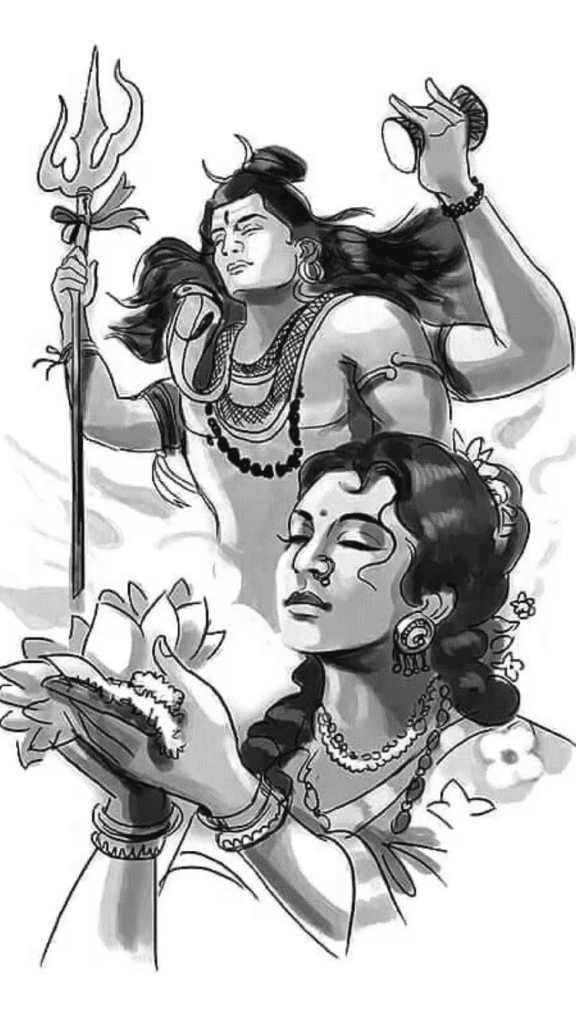
Devi is asking a question. Why? Because Abhinava says this dynamic world is not just a string of objects. It is consciousness in the form of Prashna and Uttar (Question and its Answer). That’s what the goddess does.

A dead matter is enlivened by asking a question- where is it? and how fast is it moving? What are the position of the subatomic particle?… question and another question… where is it? How fast? What is its velocity?

And it took thousand years after Abhinavgupta for contemporary Particle Physics to figure out that if these two questions are answered together, the product of their error will be constant. And, that principle is popularly called the Uncertainty Principle. What is uncertainty? It is doubt. Is that our lack of knowledge? No. That uncertainty is at the heart of reality. This is vimarsha.
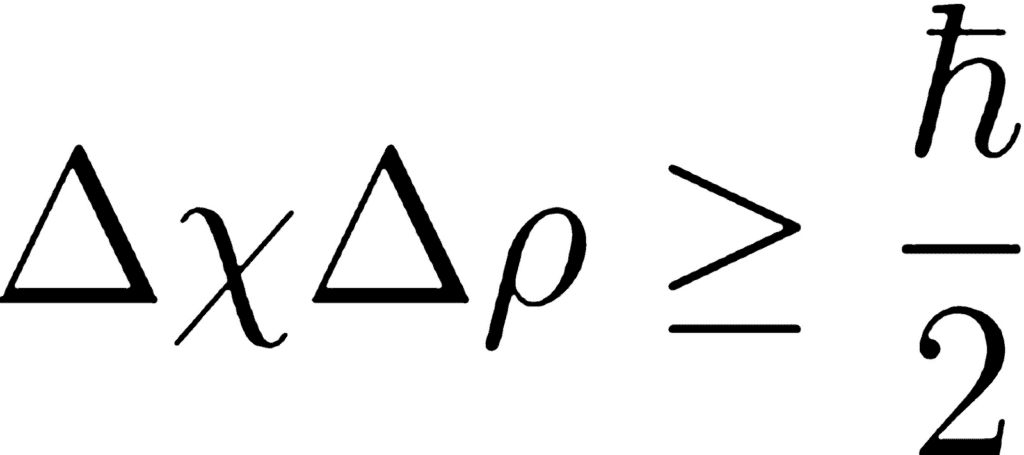
This is “amazement” because of ongoing questions. What is a question? The question is not just about the quantum uncertainty. This is a good thing. It is totally stupid if somebody says when science advances in us we will know both the velocity and the thing independently of the observer accurately as if it’s a matter of information outside. Is it so? No. This is the biggest discovery of the 20th century in physics you can answer the question “what is the velocity” correctly, you can answer the question “what is the position” but together there will be always a margin of error. You can ask the question. You should. Because the particle cannot decide through which of the slits did it go. Did it go through this one or that one? Notice the “Va”/Or. Abhinavagupta spends a lot of words in the meaning of “va” and the meaning of “kim” besides “va (or)”.

So, we all know for certain if beyond that bound (that wall/ panel where the photon was thrown) if it has gone and the wave function has collapsed on the other side, so it must have passed through the opaque surface. And, there are only two holes.
Through which one has it gone? This is a question that always remain “open”. The electron did not choose because it is dead. It does not choose. But, when the observer is conscious it can choose. “Choose” does not mean that it is just falsely telling an invented story. Whatever it will choose to observe that is the fact. I am not saying that Abhinavgupta was a great quantum physicist. I am just saying he should not.


We should have the same amount of wonder or surprise that we have in understanding quantum physics, the two-slit experiments and Schrodinger equations as we have. We should have the same wonder when we try to understand what Abhinavgupta means by vimarsha.
We should not close it and say, “Okay! this is what it means to take it from the expert”. Each of us struggles. And, we will see what Abhinavagupta has to say about how to know it best.

From this, I want to come to the most surprising part. Nevertheless, before that, there is another particular debt to Bhartrhari, Avinavagupta and Kashmir Shavism which is in the concept of pratibha. Prativa is that particular faculty that is not perception, not inference. It is a flash of intuition that can come when you explore your own doubts. Bhartrhari made it a very wide concept.

Even the total understanding of a sentence, a difficult poem Abhinavgupta is writing or a difficult sentence Immanuel Kant is writing or Banabhatta’s Kādambari has a sentence like three pages long- you are understanding each word separately atomistically. But the holistic sense which suddenly drops on you that is called pratibha. Further, Abhinavgupta spends some time in Tantraloka and other books describing the nature of this prathibha. And ultimately he wants to claim that the surprise that we have, even the best mark of pratibha (which is popularly translated as genius) is that the person who has solved the problem mathematics problem, the person who has come up with a metaphor that was searched for a long time to explain something himself does not know how he did. That is the mark of pratibha. There is no algorithm. The person might say, “I don’t know how I did this”.

In the Ellora temple of Kailasha, the sculptor has left in Brahmi’s script a poem. This has been found. It says, “At the command of the king with many years of labor, thinking and imagination I have built this particular temple and the sculptures. I don’t know how. If I am asked to do another one like this, I won’t be able to”. This is all in that inscription. This is pratibha and Abhinavgupta says, “This is identical with the power of vimarsha”. That is why a poet is supposed to have a prathibha.

In his Dhvanyālokalocana (“Illustration of Dhvanyāloka”), he says that there are two pratibhas which has to be matched. The intuitive power of the poet to come up with a beautiful metaphor/analogy and the power intuitive power of the rasika, of the appreciator, of the relisher, or of the audience to suddenly appreciate it. Of them, he calls the first as the Kārayitrī pratibha and the second one Bhabayitri pratibha. So when the two prathibhas, the two capacities match then there is perfect Rasa experience.

Now, I must give the most surprising examples. The example is of a combination of four branches of philosophy. All over the world sice philosophy is started till now, it is divided into firstly the philosophy of knowledge, which is called epistemology. This is ialso there in Sanskrit tradition, in Kashmir or elsewhere among the Buddhists i.e. all over India.

This epistemology was called Pramana Sastra. Because knowledge is “prama” and the means of knowing, perception, inference, memory and analogy of the testimony are called “pramana”. The knower is called “pramata”. And the object of knowledge is called “prameya”. So these are discussed in pramana shastra like what is the object that is perceived? Is it just the color of this? is it the material? is my memory taking part? Or are my eyes there? These are discussed in epistemology.

Then, there is metaphysics, the theory of reality. Here is the most important thing in reality that the Greeks to modern science are constantly trying to understand.

In one movie, a chemistry professor was asking in his high school class, “What is chemistry?”.
Then some student says, “Chemistry is the science of chemical reactions”.
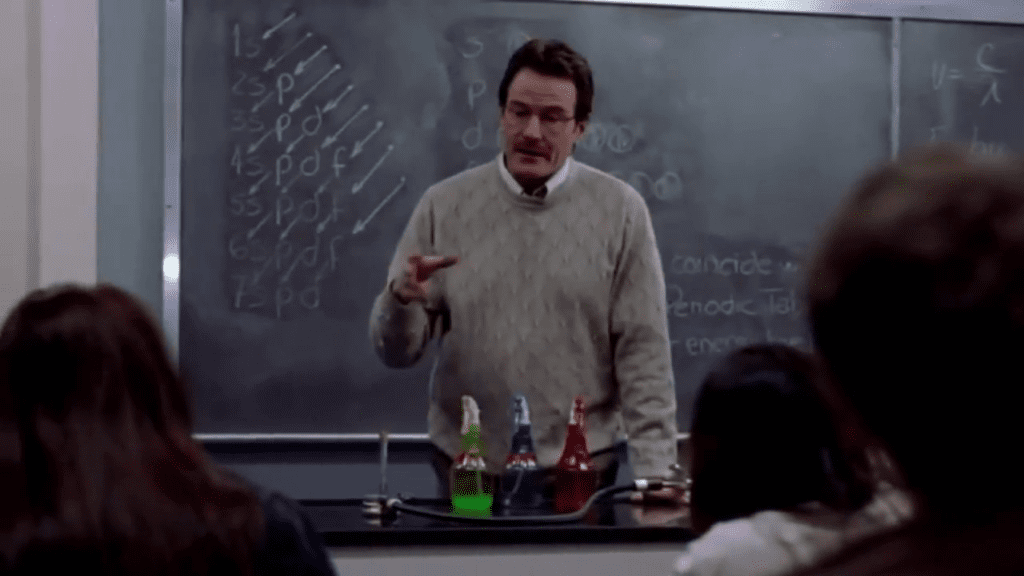
He says, “No. That is like repetitive definition. We don’t know what chemical means. What is chemistry?”.
Then he says, “Chemistry is the study of change”. Beautiful definition!

So when you look at the world, especially the world, also the biological world, even now all these Moderna and Pfizer and other companies, what are they studying? They are researching- how is the virus going to change? how is it mutating? Notice the term “mutation”.

So that is metaphysics. Moreover, in a change process, there are three nodes. Firstly, there is a beginning that is called creation, when things come into existence. And then, it is staying and then it is perishing and disappearing, maybe becoming something else, but that thing is gone.

When this cup was being made that is srishti or creation. Now, that I am holding it is in sthiti, if I put it on the table it is stable and then if somebody breaks or pulverizes it then it is “samhara” or gone. Now, apart from these three, “being” has such which is changeless. That cannot be described. So, that is called indescribable or nameless. So, there are four metaphysical states of all beings. This is discussed in the branch called metaphysics both in the east and the west. This being has such changeless is called nameless or anakhya, the beginning of being is called shristi, then the stability or the endurance (your body stays for let’s say hopefully 90 years or 100 years) that is shtiti and after that comes samhara or destruction. But- these three, whose states are these? These are states of the nameless pure being which cannot be given a name. Thus we get anakhya, shriti, sthiti and pralaya. Thus, we understand so epistemology and metaphysics.
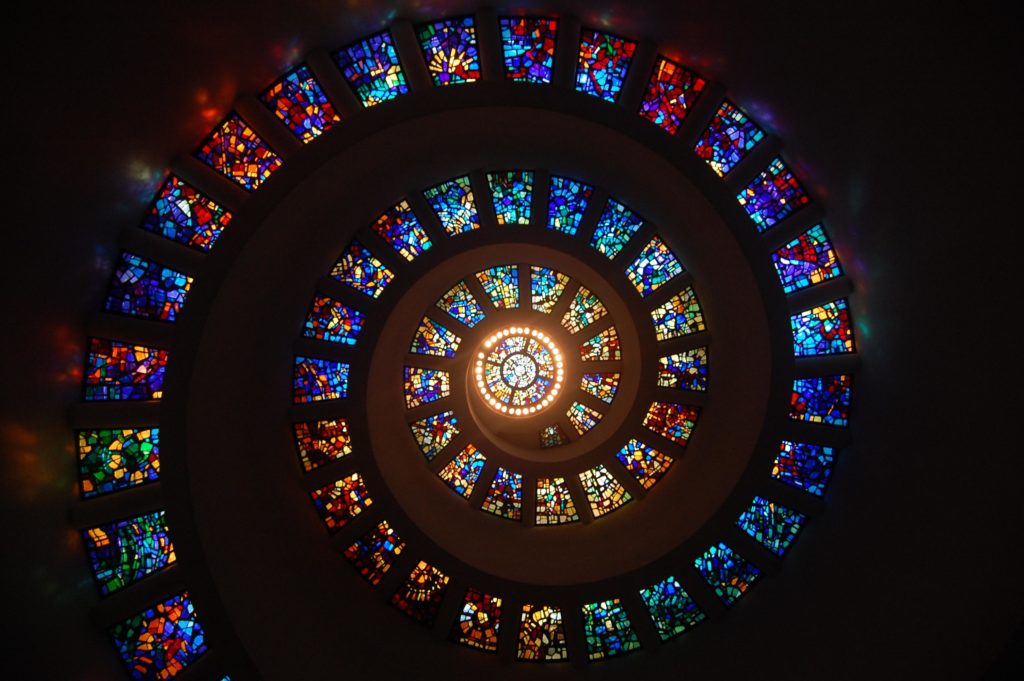
The next branch is the philosophy of religion or upasana or puja. This is theology, a big part of philosophy.

You will say atheists don’t do that. But when atheists are giving arguments like Richard Dawkins on “why god does not exist”, they are examining the concept of god. So, the concept of god along with in India, the concept of god’s goddesses, in other religions also and nature gods forms another part of philosophy and theology, philosophical theology.

Then, there is aesthetics, the science of aesthetics. The philosophy, and analysis of aesthetic experience, etc., etc. are included here. Now, metaphysics, epistemology, aesthetics and theology all come together in this exercise named-
“The Camatkara” of consciousness: epistemology, metaphysics, spirituality and aesthetics come together in moment-by-moment meditation.
The Camatkara of Consciousness:
Once again, the logical space for these epistemic phases or roles is generated by combining, mathematically, the 3 major nodes- knower, means of knowing and the object known, with 4 major ontological states as follows-
The nameless state beyond change
?Creation
?Stable continuation
??Dissolution back into original form
The resultant 12 states are an interpretation of the 12 Tantric forms of Kali the mother (Tantraloka, TA VI/145-1172)
| Knower | Means/Process of knowing | Object to be known | |
| The Nameless | Mahabhairava-Candogra Kali [12] (TA IV/171-172) | Martanda Kali [8] (TA IV/163) | Yama Kali [4] (TA/IV) |
| Creation | Paramarka- Kali [9] (TA/IV 167) | Samhara Kali [5] (TA/ IV 152) | Srsti Kali [1] (TA/IV 148) |
| Stability | Kalagni-rudra Kali [10] (TA/ IV 168) | Mrtyu Kali [6] (TA/IV 154) | Rakta Kali [2] (TA/IV 149) |
| Dissolution | Mahakala Kali [11] (TA/IV 170) | Bhadra/Rudra Kali [7] (TA/IV 158) | Sthiti-nasa Kali [3] (TA/IV 150) |
Look at the vertical side- the nameless state. This is metaphysics happening on the vertical axis. It includes nameless, creation, timeless, stability and dissolution. On the other hand, on the horizontal level epistemology is happening. What are the epistemological nodes?-
➠Knower,
➠Means of knowing and
➠Object to be known.
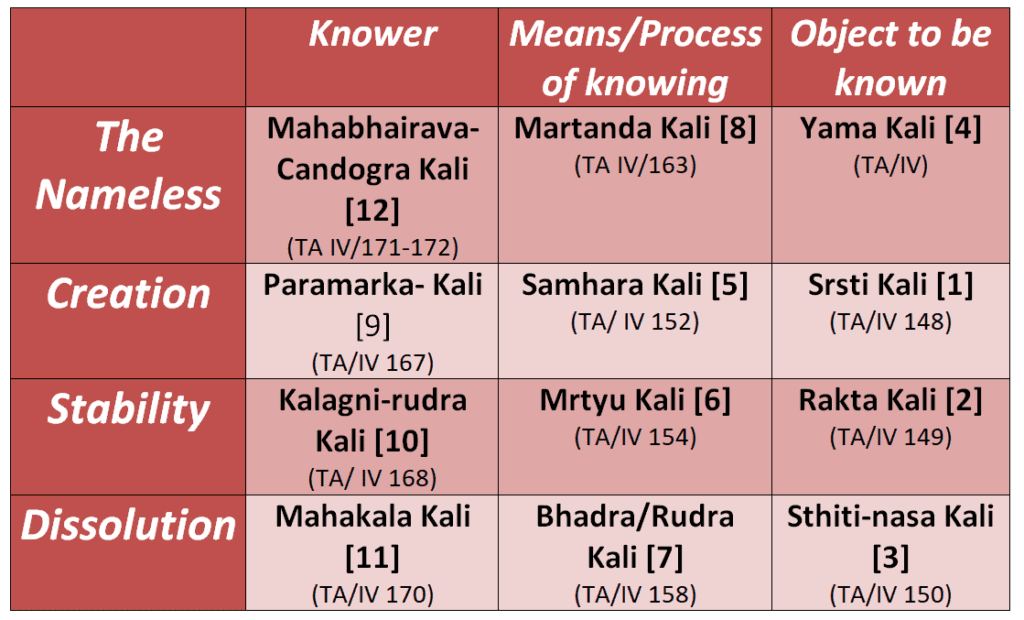
Then you analyze the method which is that- in meditation, you take any combination. Suppose right now you are sitting in meditation and thinking of dinner. So your thought has the knowable object dinner. Now, when dinner is timelessly thought about then you ritualistically give it the name- “I’m just scratching the surface”. This is Yamakali. Why? Because there has to be attention. “Yama” means samyama. You are focusing. In every focusing, if you know that you are thinking of dinner, then think again about your thought not about dinner anymore. This is vimarsha. Thus this is Yamakali- the combination of nameless (anakhya) and object to be known (prameya). The combination of object to be known and creation is Srsti Kali. Then, there is stability of the Rakta Kaali of prameya or the knowable object and dissolution of the object of knowledge sthiti nasaka.

Similarly, when you combine means of knowledge, pramana, in the middle the horizontal axis with the nameless you get Martanda Kali. And, there is a meditational instruction on each of them. But notice what is happening. You are logically dividing your knowledge process into objects to be known which is where our first focus is. I am not thinking of how I know. I am just thinking of dinner, okay. But how do I know? This is by memory or by the perception, I know that my dinner is in front of me.

Also, this can be through inferring. Eg. You can think that since it is inside the fridge there must be last night’s cooking. That is the beginning of the creation combined with pramana. This is Sanghara Kali.

Creation combined with nameless is Paramarka- Kali. Furthermore, stability combined with pramana is Mrtyu Kali and next, dissolution combined with it is Bhadra Kali. When the knower/pramatri is dissolved it is Mahakala Kali and in stability, it is Kalagni-Rudra Kali and in creation is Paramarka-Kali. Moreover, when it is beyond these time differences of beginning staying and ending, creation stability and dissolution, beyond that nameless but combined with knower the subject, the karta, the agent of knowledge, the free chooser of consciousness, that is Mahabhairava-Candogra Kali, who is identical to Bhairava himself.


Having explained all this, through different means and amazing variety of things, making it all look like a peacock’s plume but then putting it all together by connecting and enjoying not the plume which is the object of wonder, not even the vision, but the rasa, that is generated, understanding that this amazement is at learning the method of sequential meditation, he says this is only 12.

But you practice that on all 12 sense organs- the five sensory organs, the five motor organs, and manas and buddhi and thus a total on the 12 sense organs. So, 12 multiplied by 12, you have to get 144 Kaalis. How is this looking? Is this looking very jarring? Yes. That is the upaya of reasoning. With that, then all of these merges back into this Mahabhairava Candogra Kaali, who delves you to her identical Bhairava himself.

Additionally, this can happen not just by reading the books but also can happen on your own. Here, to all of us Avinabhagupta says, “Who would like to speak to stones? Listen you all. You are living beings! So that’s why I am addressing you and telling you that… You don’t have to move around the topic by reading the little descriptions and the argumentation which is needed but there in my book… But ultimately if you enter through this method of the 12-fold and 144-fold Kalis in each of your sensations, every moment, if you become meditatively so expert that you notice these 144 Kalis in 12 sense organs and then realize that these sense organs and Goddesses themselves will give you the teaching. And, these are called Karaneshwaris (karana is a sense organ, means of knowledge).

And, they will take you to the ultimate pramata because the knower in you is Bhairava Himself and what will happen for one fraction of a second (He is still addressing us) if you enter into that citadel of your own samvit consciousness is that, then you will know the truth yourself (all of you know truth is called satyam) and you will know yourself”.
Now, in the end, once again, I will subject you in the last minute to the Abhinava’s own words and saying from thousand years back to us on the way and these are, “Who speaks to rocks? You are not stones… Hey, you all listen to me. Attend! If you end up in Kaali for one second, what is the point?… You will know the truth for yourself!”.
Link of the main video talk:
Center for Indic Studies is now on Telegram. For regular updates on Indic Varta, Indic Talks and Indic Courses at CIS, please subscribe to our telegram channel !
- 40 min read
- 0
- 0








